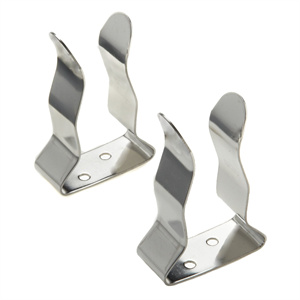Tempering Of Multi-slides Stamping Parts
The tempering treatment of Multi slide Stamping Parts is an important part of the metal heat treatment process, aimed at optimizing material properties to adapt to complex stamping processes and ensure the final quality of the parts.
Tempering treatment is usually carried out after the workpiece has been quenched. Quenching is the process of heating a workpiece above a critical temperature and then rapidly cooling it to improve its hardness and wear resistance. However, quenched workpieces often have high internal stress and brittleness, which may lead to deformation, cracking, and other problems during subsequent processing or use. Therefore, it is necessary to eliminate these adverse factors through tempering treatment.
Tempering is the process of reheating the quenched workpiece to a temperature below the critical temperature, holding it for a period of time, and then slowly cooling it. This process can reduce the hardness and brittleness of the workpiece, while improving its toughness and ductility. The choice of tempering temperature depends on the type of material, required mechanical properties, and subsequent processing and usage conditions.
The importance of tempering treatment is self-evident for Multi slides Stamping Parts. Due to the complex shape and structure of multi station stamping parts, materials need to have higher toughness and ductility to adapt to deformation and stress during the stamping process. By tempering treatment, these properties of the material can be effectively improved, thereby ensuring the accuracy and quality of the stamped parts.
It should be noted that tempering treatment should be carried out in professional heat treatment equipment, and parameters such as heating temperature, insulation time, and cooling speed should be strictly controlled. At the same time, it is necessary to conduct necessary inspections and tests on the tempered workpiece to ensure that its performance meets the requirements.
